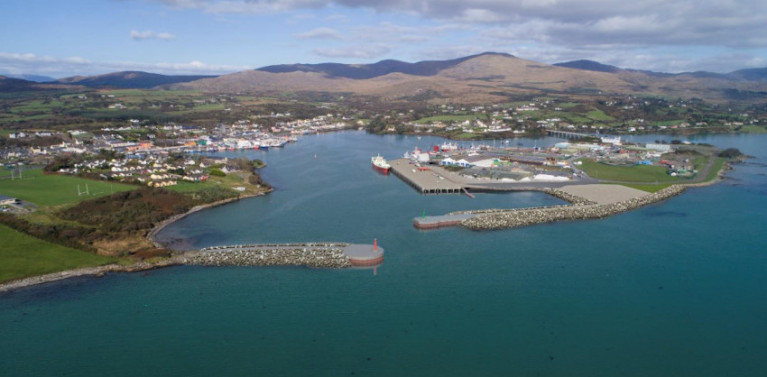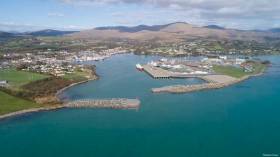Displaying items by tag: Dinish Wharf
Expansion Works Begin at Castletownbere’s Dinish Wharf
Major expansion works were set to begin today (Thursday 4 March) for Castletownbere Fishery Harbour Centre at Dinish Wharf.
Works on the €23.5 million project, which had been due to begin in late 2018, will continue on the site until March 2022 and include, but are not limited to:
- Construction of a new quay structure approximately 216m at Dinish Island, including all associated infilling and land reclamation.
- Dredging of a berthing pocket adjacent to the new wharf extension by dredging to a depth of -8.0m Chart Datum.
- Dredging of a navigation channel to a depth of -6.5m Chart Datum.
- Construction of two new breakwater structures.
- Construction of a reclamation area to act as a quay/storage hinterland area.
- Provision of all water, electrical and fuels services.
- Heavy-duty pavement surfacing to new wharf/quay structure area.
- Ancillary marine facilities and services.
- Relocation of navigation lights.
- Revised security and access arrangements for quay facilities.
Civil engineering crews will operate from the adjacent lands, existing harbour infrastructure and from jack-up barges, pontoons, heavy civil engineering plant and machinery, work vessels and platforms. Divers are also employed on site.
For safety reasons, mariners are advised to proceed slowly and with caution in the approach channel to the inner harbour and within the inner harbour area and to give the works a clear berth. Wave-wash from vessels should also be avoided.
#Harbours - Works on the €23.5 million quay extension at Castletownbere Fishery Harbour Centre are due to begin by September.
As previously reported on Afloat.ie, Marine Minister Michael Creed attended the signing of the contract for the 216-metre Dinish Wharf extension with L&M Keating Ltd, after the project was green-lit this past May.
The works are being advanced by civil engineering crews working both from the adjacent lands, existing harbour infrastructure, and from jack-up barges, pontoons, heavy civil engineering plant and machinery, work vessels and platforms. Divers will also be also employed on site.
For safety reasons, mariners are advised to proceed slowly and with caution in the approach channel to the inner harbour, and within the inner harbour area, and to give the
works a clear berth. Wave wash from vessels should be avoided.
According to Marine Notice No 33 of 2018, these works are expected to continue till March 2020 and include, but are not limited to:
- Construction of a new quay structure approximately 216m at Dinish Island, including all associated infilling and land reclamation.
- Dredging of a berthing pocket adjacent to the new wharf extension by dredging to a depth of -8.0m Chart Datum.
- Dredging of a navigation channel to a depth of -6.5m Chart Datum.
- Construction of two new breakwater structures.
- Construction of a reclamation area to act as a quay/storage hinterland area.
- Provision of all water, electrical and fuels services.
- Heavy-duty pavement surfacing to new wharf/quay structure area
- Ancillary marine facilities and services.
- Relocation of navigation lights.
- Revised security and access arrangements for quay facilities.






























































